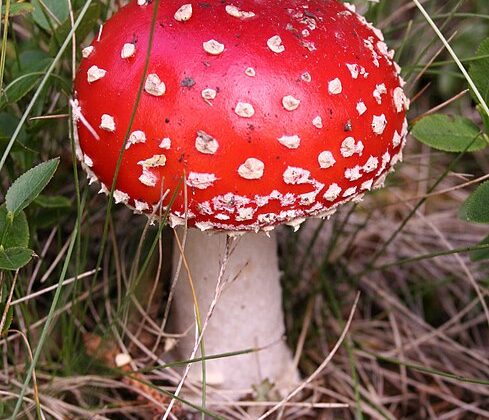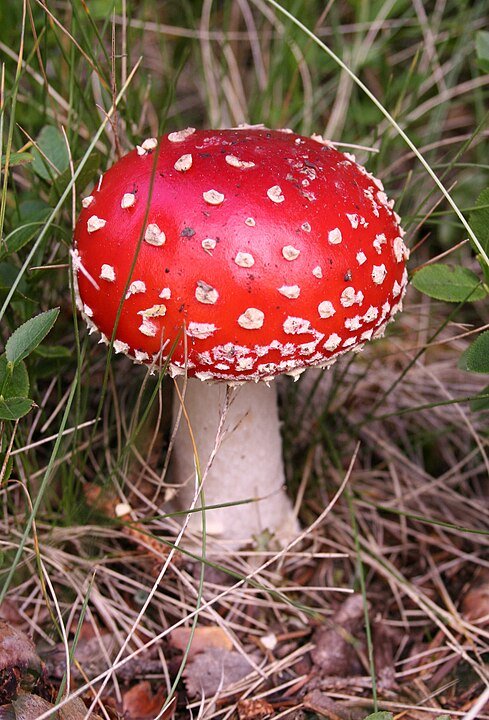

On a trip earlier this spring, Dan overheard a curious conversation at the airport. One woman was passionately advocating for a natural lifestyle to another while awaiting the boarding process to begin. Firmly opposed to all vaccines and caffeine (“it’s so bad for you!”), she extolled instead the virtues of a special mushroom tea that she drank every morning. “It’s made with the good mushrooms,” she clarified triumphantly.
Avoiding the bad mushrooms is assuredly an important tip for the good life. But there’s more to consider. While this woman’s overall approach does sound more extreme than average, it taps into a long tradition of individuals seeking cures in all the strange places, from the ancient world’s practices of incubation in certain shrines in the hopes of receiving a divine visitation and cure in one’s dreams, to Cato the Elder’s famous medicinal cabbage recipes, which included using the urine of habitual cabbage eaters as eyewash. And you don’t want to know exactly what Pliny the Elder, the natural historian, recommends gargling for your sore throat. Just take my word for it.
Professional physicians since the days of Hippocrates have been skeptical of alternative medicine, even as the concept has ever been in flux. What may seem mainstream to some is alternative to others. Just ask the medieval doctors, who loved medicinal leeches so much as to be nick-named after them. No matter how strange the practice sounds, whatever the cure is, it always somehow works at least for someone. Oh, and there are new arguments advocating for medicinal leeches, possibly vindicating those medieval doctors just a tiny bit. At any rate, weird experiments in (self) healing are still going strong in their many varied guises, two and a half millennia later. Whether we recognize it or not, most of us do participate in these experiments in some ways, big or small. Something is only weird, after all, if someone else does it.
Indeed, my own husband begins each morning with a careful routine that involves measuring two heaping spoonfuls of a suspicious-looking off-white powder into a glass before swirling it around with some almond milk. Don’t worry, it’s all perfectly legal: this is his pea protein powder (the “plain” flavor variety, no less), the only kind of protein powder that the poor man can digest. It tastes, I am told, like “cold lumpy pea soup.” Where do I sign up?
You may be wondering, just how did “cold lumpy pea soup” become this integral part of his daily routine? That story verges on a regular crime thriller. Years ago, as part of a full battery of health screenings and tests, he turned out to have excessively high levels of mercury and arsenic in his blood. If you’ve read enough murder mysteries set in an earlier time, you may be thinking: this one is clear. But I assure you, however, that no, I was not trying to poison my husband (granted, I suppose they all say that!). Nor can I call the explanation perfectly innocent, nevertheless. This is a cautionary tale about modern agricultural practices. You see, you too may have very high arsenic content in your blood; you just may not know it. It might not even be your own spouse trying to kill you either.
Commercially grown rice today, whether organic or not, has a high arsenic content, because of, well, all the stuff that our own modern agricultural and industrial practices have done to the soil over the past century or so. This may not affect most people if they only eat rice a couple of times a week. As someone who also has Celiac disease and a slew of other dietary restrictions, however, my beloved has been relying on rice as his main grain for years: rice flour waffles for breakfast, rice with lunch, rice pasta for dinner—you get the idea.
As Kyle Harper has argued in his analysis of the role of disease in world history, up until just the past four generations, it was quite common for people not to make it out of their thirties. We are undoubtedly much longer-lived than our ancestors. At the same time, though, there is the dilemma that we keep inadvertently creating ever new ways to make ourselves, our land, and our air sicker just by living our best lives under the auspices of modern progress. At least, scientific medical advancements and alternative medicine both offer us new ways to heal ourselves from these very diseases that are the product of our casually destructive practices. The cycle is vicious.
Maybe it’s time to look into those good mushrooms.